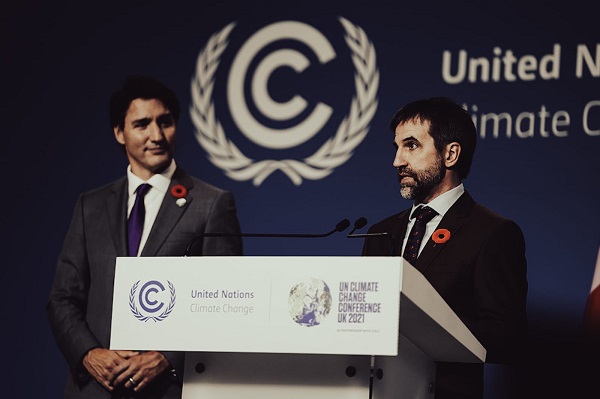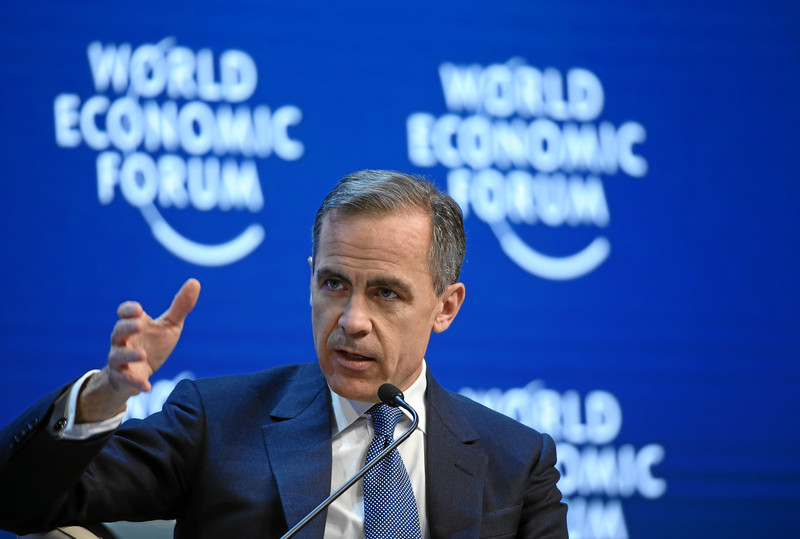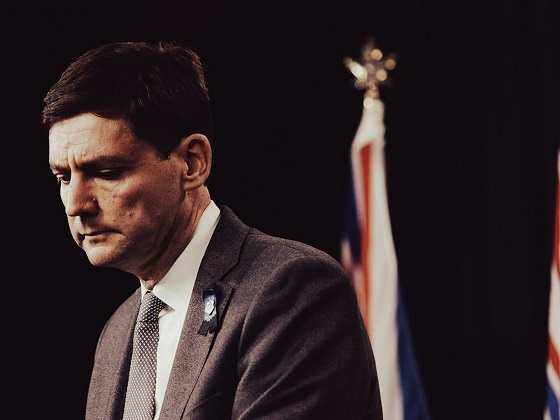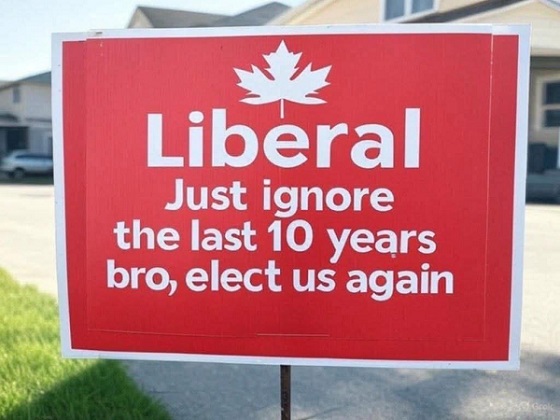Opinion
PBO Report Reveals Trudeau’s Carbon Tax Crushes Middle-Class Canadians

PBO Report Exposes Trudeau’s Carbon Tax as a Middle-Class Burden, With Net Economic Losses, Crushed Job Prospects, and Hollow Rebates
In a bombshell report dated October 10, 2024, the Parliamentary Budget Officer (PBO) exposes the cold reality of Trudeau’s carbon tax policy: it’s making life harder for middle-class Canadians. While the Prime Minister continues to tout the virtues of his climate plan, the PBO’s findings show that far from protecting the environment, the federal fuel charge is crippling Canadian families—especially those in the middle income brackets.
Let’s be clear: Trudeau’s carbon tax isn’t just a simple “polluter pays” system. According to the PBO’s distributional analysis of the federal fuel charge, average Canadian households will face substantial net economic costs by 2030, despite government-issued rebates. Trudeau loves to parade the fact that Canadians get rebates through the Canada Carbon Rebate (CCR), but the numbers tell a different story when you dig into the real economic impact.
The Middle-Class Burden
For middle-class Canadians, the so-called “climate action” of the Trudeau government comes with serious consequences. By 2030-31, the carbon price will hit $170 per tonne, with devastating effects on household incomes. Even though rebates are supposed to offset the pain, the PBO’s analysis shows that once you factor in the economic fallout—job losses, reduced wages, and weaker investments—middle-class families end up worse off.
For example, in Ontario, a province Trudeau regularly visits to promote his policies, middle-income households will face steep costs. According to the PBO, households in the third quintile (middle income) will see $588 in net costs—and that’s just after factoring in rebates. When you look at the combined hit from job losses and reduced income, the overall financial burden for middle-class families grows even larger.
In Saskatchewan, things are even more dire. The average household in the third income quintile will suffer from a $1,205 net loss by 2030-31. For working families who depend on stable employment in energy, agriculture, and manufacturing, this tax punishes them more than it rewards them.
Trudeau’s Rebate Shell Game
Trudeau’s government spins the carbon rebate as some kind of economic miracle, suggesting families get back more than they pay. But as the PBO’s report shows, this claim is little more than political smoke and mirrors. The rebates might look good on paper for the lowest-income Canadians, but for everyone else—especially middle-income earners—it’s a losing game.
Even with rebates factored in, the economic damage of Trudeau’s carbon tax results in net losses for most families. By 2030, the federal fuel charge will contribute to an overall reduction of 0.6% in real GDP across the backstop provinces, which excludes Quebec and British Columbia. Middle-class families are stuck dealing with reduced employment opportunities, lower investment incomes, and weaker wage growth—all while Trudeau’s elite friends and the liberal establishment pat themselves on the back for “going green”.
Crushing Investments and Jobs
What Trudeau doesn’t want you to know is that this tax doesn’t just hurt family finances. It’s killing jobs. The PBO report shows that by 2030, the carbon tax will reduce capital income—that’s the money people earn from investments—by as much as 2.4% in provinces like Alberta. Worse, it will slash labor income—the wages people depend on—by over 1.4% in places like Saskatchewan. That’s devastating for middle-income earners whose livelihoods depend on industries targeted by the Liberals’ climate agenda.
While low-income Canadians might see minimal gains from Trudeau’s rebates, middle-class families face the harsh reality of stagnant wages, diminished savings, and a lack of economic opportunity. Trudeau’s tax isn’t just a burden on polluters, it’s a punishment for working Canadians trying to get by.
A Failed Experiment – Just Look at British Columbia
If you want to see where Trudeau’s carbon tax will lead, just look at British Columbia. They’ve had a carbon tax since 2008, and it hasn’t stopped a single wildfire, flood, or heat dome. Did that carbon tax prevent the devastating atmospheric river? Not a chance. This so-called climate solution has done nothing to shield British Columbians from environmental disasters.
Even worse, while the federal government has been collecting billions in carbon tax revenue, they’ve neglected to address the fuel buildup in forests around places like Jasper. For years, experts have warned about the dangers, and yet not a dime of that tax money was spent on controlled burns or preventive measures. The result? Our beautiful Jasper National Park was left to burn. Trudeau and his government couldn’t save our park, they couldn’t save our forests, and they certainly couldn’t save Jasper.
A Sacrifice for Nothing
My fellow Canadians, governments have been trying to control the weather since the dawn of time. Ancient civilizations sacrificed animals to the gods, hoping for good weather. Today, the sacrifice is your money. Yesterday, it was a goat to Zeus; today, it’s a carbon tax to Trudeau. In the end, it’s just another way for the government to take from you, promising it will fix things it simply cannot control.
But here’s the truth: this tax won’t change the climate, won’t stop the floods, and certainly won’t bring back our forests. The only thing it’s doing is draining your household to feed a bloated government. The PBO report is clear: Trudeau’s carbon tax is hurting middle-class families while delivering nothing in return.
Subscribe to The Opposition with Dan Knight . For the full experience, upgrade your subscription.
2025 Federal Election
Mainstream Media Election Coverage: If the Election Was a NHL Game, the Ice Would be Constantly Tilted Up and to the Left

From EnergyNow.Ca
Like good refs for a NHL hockey game, election coverage should be as unbiased as possible and provide balanced judgement. In Canada, mainstream media rarely provides this.
By Jim Warren
Canada’s Conservatives face an uphill battle when it comes to obtaining unbiased coverage in the mainstream Canadian news media. Any in doubt need only watch a half hour of election coverage on CBC or tune-in to the CTV news channel, which is stacked with left leaning election commentaries favoring the Liberals, despite their abysmal record over the last 10 years, which has all but been forgotten by many media journalists in their attempt to help Canadians forget as well.
The Liberal government’s provision of tens of millions in grants and tax credits to support the jobs of journalists has certainly not made reporters any less Liberal-friendly.*
But the truth is, the Liberals did not actually need to bribe most mainstream journalists and their employers to gain their support. They already had it. And that’s been bad news for the fortunes of the gas and petroleum sectors along with many of the other things we do to create wealth in Canada (like farming, mining, construction and manufacturing, including petrochemicals).
Year’s before the Liberals launched their 2019 media subsidization programs, Canada’s legacy media outlets had embraced climate alarmism and were okay with the demonization nonrenewable energy. They functioned like public relations agents for the environmental movement’s anti-Alberta oil campaign (2008-2021).
For two decades now, conventional media outlets have been publishing and broadcasting sensationalized misinformation about the need to make deep and immediate cuts to CO2 and methane emissions to save the planet from imminent doom.
For most journalists in the conventional media, it was no great leap to fall in step behind the Trudeau government’s anti-oil, gas and pipelines agenda. Climate alarmists in the media assumed Justin Trudeau, Steven Guilbeault, Jonathan Wilkinson and other members of the Liberal cabinet were on the side of the angels. Now, with Justin Trudeau out of the picture, it has become evident that current Prime Minister Mark Carney will continue with the anti-oil, gas agenda of Justin Trudeau, who personally endorsed him and has been advising Trudeau for a number of years to not only keep the carbon tax, but increase it.
As a result, the Liberal assault on conventional energy went largely unchallenged in the legacy media.
Thankfully there are a few notable exceptions. Outstanding columnists and journalists like Don Braid and Brian Lilly have survived. They have drawn attention to the economic madness of the assault on oil, gas and pipelines, the consequent stifling of economic growth and their effects on national unity.
And there are of course large numbers of journalists and policy analysts working online outside the mainstream who have provided the bulk of journalistic criticism of the Liberals. People like Dan McTeague have been making appearances in online interviews and commentaries posted to you tube. And many online news sites including Northern Perspective have been keeping tabs on Liberal mismanagement and corruption.
As a general proposition many mainstream journalists under the age of 40 have swallowed exaggerated misinterpretations of climate science. And they accept at face value the environmental movement’s irrational claims about the urgent need to massively and rapidly reduce the consumption of oil and natural gas. Journalists rarely address the economically ruinous effects of reducing oil and gas consumption too fast and by too much.
This is in part because many of them are economically illiterate. If they went to university they typically studied soft subjects like sociology, gender studies and social justice. The values and beliefs they adopted at university are reinforced by their favourite social media sites.
They know more about things like the plight of the transgendered than they do about wealth creation or how to foster economic growth. This makes it rather easy for them to accept the gospel according the federal Liberals. “Oil is bad and why would we fuss over fiscal and economic problems when deficits and debt are just numbers that take care of themselves?”
Mainstream journalists haven’t had their eye on the ball when it comes to the social and economic harm caused by Liberal environmental policy. We’re not talking about chump change lost because of a bit of irritating red tape.
My own calculations, under an experimental scenario, show that the cost of not having Energy East, Northern Gateway, and the Trans mountain expansion fully approved and operating for a 10 year period was approximately $290 billion in lost revenue. (The historical sample period was from 2013-2023, a period of mostly low global oil prices, which suggests the $290 billion figure significantly underestimates the potential for lost revenue)
The Fraser Institute and others have conducted and published important studies identifying the massive decline in investment in the petroleum and gas industries and more generally across many economic sectors. In the first five years the Liberals were in office their energy related environmental policies like Bill C-69 (The Impact Assessment Act) in particular, cost an estimated 200,000 jobs nationally and a massive reduction in investments in Canada’s oil and gas sectors.
These losses were not mourned by the conventional media based in Central Canada. Some journalists assumed clobbering the energy industry in the west was a good thing because it would mitigate climate change. They were either unaware of or uninterested in the people who lost jobs and the damage being done to the Canadian economy.
No less influential is the mainstream media’s laser like focus on issues primarily relevant to Toronto and Montreal. Problems on the prairies typically escape notice. As a result some low information voters in the regions where Canadian elections are decided are unclear as to whether Saskatchewan is a city or a province.
Supporting evidence
On May 2 of 2024 an article appeared in EnergyNow which used published research and the actual scientific reports issued by the inter-governmental Panel on Climate Change (IPCC) to demonstrate that the mainstream media in North America and Europe have bought into hyperbolic misinterpretations of climate science. The column showed how Journalists have taken as truth the false claims of overly zealous environmental activists about the pace of global warming and how the green transition will supposedly have little to no adverse impact on most people’s livelihoods and economic well-being.
The article explains how journalists, climate alarmists and environmental activists inhabit the same corner of the social media universe. The research shows many journalists are more likely adopt the opinions and information they encounter on Twitter (Now X) and other online forums to inform their stories than the scientific research published by organizations like the IPCC.
May 2, 2024, Opinion: How social Media and Sloppy Journalism Misrepresent Climate Science
The fact is too many Canadian journalists have bought into the environmental zealotry of an online tribe which both shares and shapes their beliefs in relation to climate science and their views about oil and gas. This has been the case since the mid to late 2000s.
To repeat. The Liberals did not need to subsidize journalists to get them to buy into their environmental and energy policies—they were already onside.
The real reason for the subsidy programs was to prevent media employers from laying off journalists. Times have been tough for the mainstream news media. The solvency of many newspapers in particular is tenuous. Network television has also been suffering. The CBC goes $1.2 billion into the red each year, which is explained by the fact it attracts just 4.4% of Canada’s viewing audience during prime time. Streaming has radically changed North Americans viewing preferences and the sources they subscribe to.
Mainstream media is in palliative care. Plowing government grant money into it is like investing in the buggy whip business well after Henry Ford had cranked out tens of thousands of Model Ts.
There may be some mainstream journalists who will suffer a pang or two of common sense or integrity and criticize Liberal environment and energy policy during the election campaign. But it seems highly unlikely mainstream media outlets will desert the Liberals and get behind the Conservatives. Anyone betting the farm on that sort of outcome needs to set down the crack pipe.
For CBC to come out swinging against Mark Carney would require one of those proverbial “caught him in the act and thrown in jail” moments.
All that being said, we might take a bit of faint hope from an older tendency among journalists. Some of them still have an underlying psychological need to pounce on gotcha moments.
These brand of journalists are on the lookout for evidence exposing malfeasance, errors, and unexplained flip flops which make politicians look bad, and simultaneously help journalists look like smart and fearless champions of the truth. Some journalists hope to be viewed like reincarnations of Woodward and Bernstein of Watergate fame and become legends for taking down the powerful.
However, the gotcha urge is not what it once was. For many younger journalists the catechism of all things woke and progressive encourages them to ignore gotcha ammunition which might embarrass environmentally sanctimonious Liberals.
In the final analysis, the election hopes of supporters of the western energy sector will depend largely on election coverage in the nonconventional, mostly online, media.
Add to that a Conservative campaign focused on building back Canada and elminating Liberal anti-resource development red-tape and bureaucracy, to move away from reliance on the US, which is what the election should be focused on.
*In March 2024 the Liberals added $58 million to cover three years of support for one just one of their three subsidy funds for journalists, the Local Journalism Initiative.
This fund provides media outlets with a 35% tax credit for every journalist they have on staff.
NOTE: The opinions expressed in this commentary are those expressed the author and do not necessarily reflect the views, positions, or policies of Enerpoint iMedia Corp. o/a EnergyNow.
2025 Federal Election
Mark Carney is trying to market globalism as a ‘Canadian value.’ Will it work?

From LifeSiteNews
By Frank Wright
A campaign to appeal to national sentiment is a strange gambit for Liberals – committed as they are to the replacement of the nation with globalist policies.
The storm over Donald Trump’s threatened tariffs over the Canadian border crisis has been baked into a vote-winning meme by Canada’s Liberal Party. Yet with an election only weeks away on April 28, can a sentimental appeal to a vanished Canada secure a win for Mark Carney?
Trump’s tariffs were expected to hit Canada on Wednesday’s “Liberation Day,” refueling a furor over Canadian sovereignty which has led some to say this is “shaping up to be the trade war election.”
Responding to the tariffs, which ultimately never came to fruition in the way the Liberals were warning, a meme war broke out with Carney responding to harsh reality with a feelgood slogan.
Elbows up, Canada. pic.twitter.com/0gJ2opnPjZ
— Mark Carney (@MarkJCarney) March 22, 2025
“Elbows up!” is the new Current Thing in Canada, a media craze designed to stir nationalist indignation in elderly voters who may even remember the 1950s origin of the phrase.
The elbows refer to those of Gordie Howe – a 1950s hockey legend from Saskatchewan – a conservative province – and from a time when Canada was populated by Canadians.
It bears all the hallmarks of an “astroturf” campaign – intended to look authentic, but in reality a manufactured mass belief for marketing purposes.
“Elbows up” seeks to inspire a fighting mood against the threat – or promise – of tariffs on Canadian trade with the U.S.
Carney will ‘cave’
It is a classic example of the manipulation of popular feeling into political allegiance. How will the feelings of aging voters affect the imposition of tariffs? Not at all. Nor will the Canadian Prime Minister be able to stop them.
Insider reports say that Carney will “quietly cave” to Donald Trump over the issue, if the U.S. president does indeed go forward with them.
Prepare for the Carney ‘cave’ on trade with the USA
Ian Bremmer is the boss of Gerry Butts and Mark Carneys wife’s at Eurasia Group. He just told US decision makers that:
“I expect Ottawa will quietly fold shortly after the vote….”
Ian, sitting daily with Carneys inner… https://t.co/PVQIeUzuFQ
— David Knight Legg (@KnightLegg) March 27, 2025
Silence over ‘devastating’ Chinese tariffs caused by Trudeau
Why? Carney has no alternative. He has already “caved” – to China – over the same issue. “Devastating” Chinese tariffs took effect over a week ago in Canada, as Global News reported:
Canadian agricultural producers are warning of devastating impacts from new Chinese tariffs that began Thursday (March 20th), which they say will compound the economic strain from the U.S. trade war.
The tariffs are severe, and will have a dramatic impact – as China is Canada’s second-largest trading partner behind the United States.
“China has imposed a 100 per cent levy on Canadian canola oil and meal, as well as peas, plus a 25 per cent duty on seafood and pork,” the outlet reported.
These tariffs cannot be corrected by hockey memes, and are a response to tariffs placed on Chinese goods by Liberal Prime Minister Justin Trudeau. The Liberal Party – seeking election over outrage on tariffs – has created a tariff crisis, whose costs will be borne by the people who vote for them.
There are no “elbows up” against China. In fact, their tariffs have been greeted with silence from Carney, who has said U.S.-Canada relations are at an end.
Corruption, drug cartels in Canada
Anger at Donald Trump obscures the serious problems which prompted his suggestion that Canada could be absorbed into the United States. “Elbows Up” is a cool way of making Canadians look past the fact that the crisis they inhabit has been created by the Liberals and their globalist agenda.
On February 1, Trump issued an executive order “Imposing duties to address the flow of illicit drugs across our northern border.”
Terry Glavin, writing in January for Canada’s National Post, dismissed Trump’s earlier claims of a crisis over Canadian “border security and drug trafficking” as a “pretext” for his “…declared objective of exerting ‘economic force’ to annex Canada as the 51st American state.”
Yet this too appears to be a fantasy inspired by national sentiment – which simply ignores reality.
As LifeSiteNews reported, Canada’s second bank has laundered over 18 trillion dollars in the U.S. and Canada for Mexican and Chinese drug cartels. The world’s largest fentanyl factory was discovered in Vancouver in February.
Canada a ‘failed state’?
The serious issue of corruption by Chinese Triads combines with a picture of impotent Canadian law and border enforcement to suggest that Canada may be, as Glavin warned, “approaching failed-state status.” When the memes wear off, this is the reality faced by Canadian voters.
Canadians have complained since 2017 that life is too expensive to have a family.
Now “a generation” cannot afford a home, and many struggle to pay for groceries. Help is at hand, however.
Their Liberal government supports Medical Assistance in Dying (MAID) – killing the elderly, poor and ill as healthcare – whilst promoting radical “gender” ideology to help sterilize children.
Will Carney come to the rescue?
Carney is a committed “Net Zero” fanatic, and is the kind of “Catholic” who fervently supports abortion.
His moral integrity is demonstrated further by the fact that his $25 billion “green” investment fund was located in Bermuda to dodge Canadian taxes.
As the Canadian Catholic Register cautions, “[Carney] is a well-connected globalist with deep ties to institutions such as the World Economic Forum, the United Nations, Bank for International Settlements, and the Financial Stability Board.”
Globalist ‘Canadian’ values
National identity is a strange appeal to make on behalf of a party which appears to be working hard to replace Canadians with immigrants, and which is now lead by a globalist technocrat.
It is the values of globalism, of course, which are presented to voters as “Canadian values”: open borders, LGBTQ “rights,” “gender” surgery and hormones for children, and the Net Zero deindustrialization program strongly supported by the Liberal leader Mark Carney.
How long can this appeal to save the nation of Canada from foreign influence convince Canadians to vote for more of the same? The Liberal Party has led Canada into crisis, presiding over corruption so severe that its police, judicial and border authorities are deemed incapable of being trusted by the USA.
This is not a charge made solely by the Trump administration, but also under Biden – with Antony Blinken pressing the matter of the insecurity of the Canadian border as far back as 2022. In the coming weeks, the real issues which have consigned Canada to a fond memory may well shrink the Liberal lead reported by the polls.
What do the polls say?
With some headlines trumpeting an “eight point lead” for the Liberals, others show a narrower advantage for the globalist Carney – and one leading firm has them tied with the Conservatives.
Abacus Data’s March 30 poll had both parties neck and neck at 39%. Abacus, who describe themselves as “Canada’s most sought-after, influential, and impactful polling firm,” “…were one of the most accurate pollsters conducting research during the 2021 Canadian election.”
A second poll shows a narrower lead, and a clear bonus for Carney for simply not being Justin Trudeau.
338 Canada showed a four point lead for the Liberals on March 31, and its graph clearly illustrates that their lead relies on disaffected NDP voters – and the collapse of the Bloc Quebecois vote.
Reality enters the chat
With the issues at home now overtaking Trump and his tariffs, the cost of living and those allied to mass migration such as housing are returning to the forefront of voters’ minds. The issue of reality – and who is the real Mark Carney – may well overtake the fake nationalism of “Elbows up.”
A campaign to appeal to national sentiment is a strange gambit for Liberals – committed as they are to the replacement of the nation with globalist policies – and of its people through mass immigration. Carney has been powerless to halt Chinese tariffs. He is powerless to halt those of Donald Trump.
If Canadians can see beyond cringe hockey memes these two issues are clearly a reaction to the actions and inaction of a Liberal-led Canada. This is the reason that Conservative leader Pierre Poilievre is campaigning on the harm done to Canadians by the “lost Liberal decade.” If Canadians can be persuaded by the argument presented by reality, it seems unlikely they will vote for another – whatever the polls may say.
-

 Business2 days ago
Business2 days agoCalifornia planning to double film tax credits amid industry decline
-

 2025 Federal Election6 hours ago
2025 Federal Election6 hours agoCanada Continues to Miss LNG Opportunities: Why the World Needs Our LNG – and We’re Not Ready
-

 Catherine Herridge2 days ago
Catherine Herridge2 days agoFBI imposed Hunter Biden laptop ‘gag order’ after employee accidentally confirmed authenticity: report
-

 Business1 day ago
Business1 day agoB.C. Credit Downgrade Signals Deepening Fiscal Trouble
-

 COVID-191 day ago
COVID-191 day agoTrump’s new NIH head fires top Fauci allies and COVID shot promoters, including Fauci’s wife
-

 2025 Federal Election1 day ago
2025 Federal Election1 day agoWill Four More Years Of Liberals Prove The West’s Tipping Point?
-

 Freedom Convoy1 day ago
Freedom Convoy1 day agoFreedom Convoy leaders Tamara Lich, Chris Barber found guilty of mischief
-

 Business1 day ago
Business1 day agoTrump’s ‘Liberation Day’ – Good News for Canadian Energy and Great News for WCSB Natural Gas








